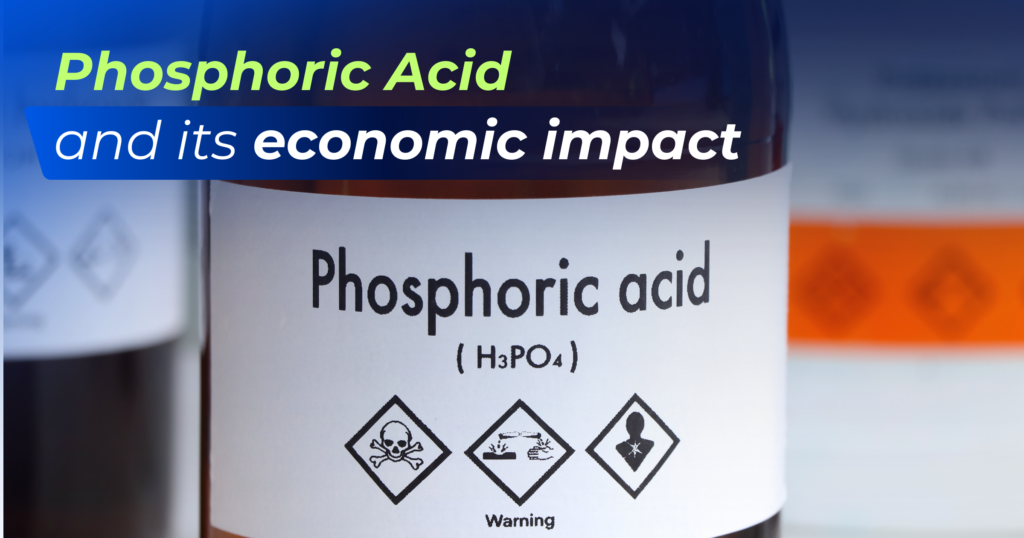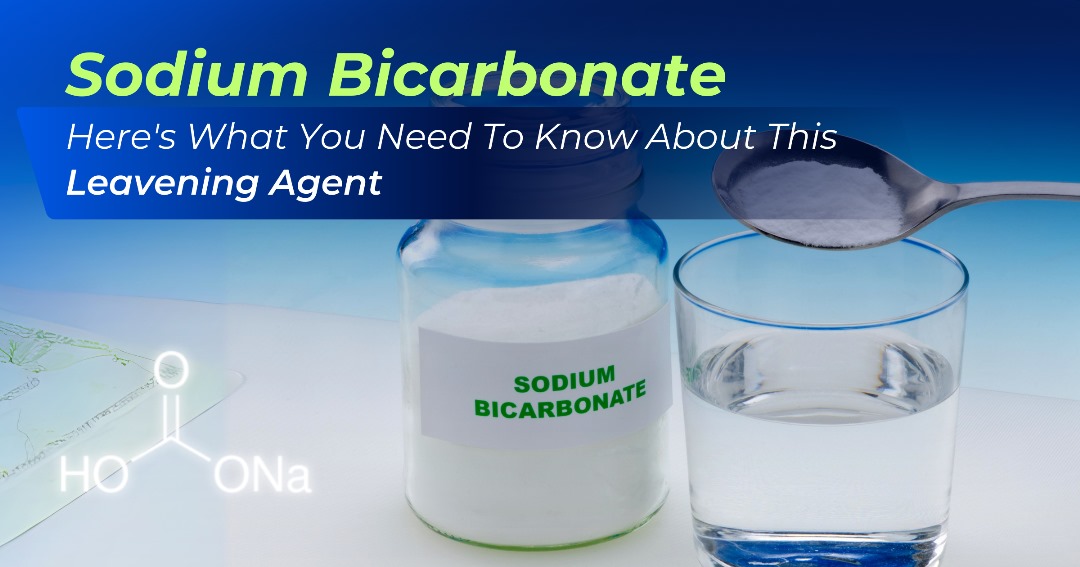
Phosphoric acid (H3PO4) is an inorganic compound of phosphorus, hydrogen and oxygen. It is a clear, colourless, odourless liquid highly soluble in water. It has a variety of industrial applications, including fertilisers, food additives, cleaning agents and rust removal. It is one of the most widely used acids globally.
Phosphoric acid plays a vital role beyond agriculture, where it powers fertiliser production. It’s used across industries—from detergents and food additives to pharmaceuticals and fire retardants—integrating deeply into global trade and economic growth.
With a market valued in billions, phosphoric acid fuels job creation and growth across various sectors. As populations rise and living standards improve, demand for this versatile chemical continues to climb, cementing its status as an economic cornerstone.
However, environmental concerns around resource depletion and toxic byproducts, along with geopolitical challenges, cast a shadow on its widespread use. Balancing its economic benefits with sustainability remains crucial.
This article explores the history, diverse applications, economic significance, and environmental challenges of phosphoric acid, offering a deeper insight into the chemical shaping our modern world.
Phosphoric acid boasts a surprisingly rich and fascinating history. Its journey from alchemical curiosity to an agricultural powerhouse and beyond unveils a tale of scientific discovery, evolving human needs, and unintended consequences. Let’s delve into the past and trace the intriguing story of this ubiquitous molecule.
Applications of Phosphoric Acid in Manufacturing
Phosphoric acid is essential for producing phosphate fertilisers like superphosphate and triple superphosphate, supplying phosphorus needed for healthy crop growth and high yields.
Also, its mild acidity helps remove rust and oxide layers from metal surfaces, forming a protective phosphate coating, preventing future corrosion and extending metal lifespan.
Acting as a pH adjuster in water treatment processes, it helps prevent corrosion in pipes, improving treatment efficiency, and maintaining optimal water quality for industrial and municipal uses.
It adds tanginess to sodas and acts as an acidulant in foods like jams, balancing pH and enhancing flavour while preserving freshness. In detergents, it softens hard water, aids grease removal, stabilising formulations and preventing the growth of bacteria.
Acting as fire retardants in wood, textiles, and plastics, these compounds release water and phosphoric acid, quenching flames and slowing fire spread. Concurrently, it acts as a buffering agent, acidity regulator, and precursor for certain medications. Its purity and controlled acidity make it a valuable ingredient in drug manufacturing.
Equally, it etches enamel in dentistry, creating a strong bond between teeth and fillings or crowns for durable dental repairs. Furthermore, it etches silicon wafers in microchip production, forming intricate circuitry essential for modern electronics.
Lastly, Phosphoric acid finds use in textile dyeing, improving dye adherence and colourfastness in fabrics, enhancing flame resistance in textiles for safer applications.
These are just a glimpse of the diverse applications of phosphoric acid in manufacturing. Its unique properties and versatility make it a valuable tool across various industries, from agriculture and food processing to pharmaceuticals and electronics. As technology evolves and new applications emerge, phosphoric acid’s impact on the manufacturing landscape will continue for years.
Global Supply and Demand of Phosphate Acid
The top producers of phosphoric acid—China, the U.S., Morocco, and Russia—account for over 75% of global output. Approximately 90% of production is used in fertilisers, with the rest supporting industrial applications.
Global consumption has grown steadily at around 3% annually, driven by Asia’s expanding agriculture sector and industrialisation. Africa’s current share remains small but offers high growth potential in the future.
Phosphoric acid prices have been volatile due to factors like production halts, trade embargoes, rising phosphate rock costs, and oil-related transportation expenses. Supply constraints stem from phosphate rock shortages, environmental regulations, and geopolitical risks in key exporting regions.
Demand continues to rise, fueled by fertiliser production, food security efforts, and agricultural expansion in emerging markets. As Africa strengthens its manufacturing capabilities, the continent is poised to increase phosphoric acid consumption across various industrial sectors.
The African Phosphoric Acid Market Overview
Phosphoric acid production in Africa is concentrated in Egypt, Morocco, Tunisia, and Western Sahara. Egypt leads with 5.8 million tonnes produced in 2022, followed by Tunisia with 1.2 million tonnes.
While Africa produces sufficient phosphoric acid for internal consumption, several countries still rely on imports, which rose by 14% in 2022. The average price of imported phosphoric acid across Africa is around $900 per tonne.
South Africa and Nigeria are the largest importers, accounting for over 50% of Africa’s imports. Rising economic growth and expanding manufacturing sectors across the continent are driving demand for fertilisers, livestock feed, and processed foods, all of which require phosphoric acid. This trend is expected to attract more investments in African production capacity.
In Nigeria, phosphoric acid consumption reached approximately 450,000 metric tons in 2021, growing at a 7% CAGR since 2016. Limited domestic production means Nigeria relies heavily on imports, priced at $800-850 per ton. Rising logistics costs are squeezing manufacturers’ profit margins.
The Nigerian government is encouraging investment in local production to reduce import dependency. Indorama Eleme Fertilizer and Chemicals Limited recently launched a $1.4 billion fertiliser complex with a capacity of 300,000 metric tons annually. Similar projects are expected to increase Nigeria’s phosphoric acid self-sufficiency in the coming years.
Growth Potential in Africa
Africa possess a promising growth potential, with abundant phosphate rock deposits in Morocco, Tunisia, Algeria, Egypt, Senegal, and Togo. However, as industrialisation accelerates, demand is rising across major industries within Africa’s manufacturing sector.
Africa’s raw materials and growing consumer base is expected to reach 2.5 billion by 2050, offering vast opportunities for relevant industries reliant on phosphoric acid. Furthermore, urbanisation and the rise of a consumer class across African cities fuel demand for products using this versatile compound.
In light of this, Nigeria, with its phosphate reserves and a population exceeding 200 million is well positioned to take rewarding advantage. Investments in manufacturing will reduce import reliance, foster job creation, and boost economic diversification.
To unlock Africa’s potential, supportive policies, technical skills and infrastructure development are crucial to enable the transformation of raw phosphate into higher value products, enabling job creation, import substitution and diversified economic growth across the continent.
Impact of Phosphoric Acid on African Manufacturing
Firstly, as a crucial component in fertilisers, it can help improve agricultural yields, providing a stable and affordable food supply to aid economic development. Its applications in metal treatment, water treatment and detergent manufacturing further establishes its importance.
With untapped natural resources and minerals, phosphoric acid is crucial in ore processing, driving demand as more mineral smelting and refining comes online in Africa. Affordable supply allows manufacturers to reduce costs and improve export quality, benefiting sectors like foods and beverages, textiles and consumer products.
Access to phosphoric acid facilitates domestic value addition, promoting import substitution and export growth. This shift enables African countries to advance up the economic value chain, creating technical jobs and fostering broader industrialisation. Ultimately, phosphoric acid provides a pathway for sustainable economic growth beyond mere resource extraction.
Impact on Nigerian Manufacturing
Affordable access to phosphoric acid supports industrial growth and economic diversification, positioning Nigeria as a regional leader. Increased phosphoric acid production can greatly benefit Nigerian manufacturing across several sectors.
- Fertiliser: As a key component in fertilisers, locally sourced phosphoric acid can reduce Nigeria’s reliance on imports, boost domestic agriculture, and enhance food security. It also creates jobs in manufacturing and transportation.
- Food and Beverages: Phosphoric acid is used in processed foods and drinks as an acidity regulator. Affordable, locally produced acid can help expand Nigeria’s food processing industry, enabling exports of products like fruit juices, breads, and cheeses.
- Cleaning Products: Soaps, detergents, and disinfectants rely on phosphoric acid. Increasing local production can reduce dependence on imported cleaners and open opportunities to supply both domestic and regional markets.
- Metal Treatment: Nigeria’s growing steel and fabricated metal industries benefit from phosphoric acid in metal etching, cleaning, and coating, providing a crucial input for industrial growth.
- Textiles: As a dye fixer, phosphoric acid supports textile production. Local availability can promote the expansion of Nigeria’s textile industry by ensuring access to essential chemicals.
- Economic Diversification: Increasing domestic phosphoric acid production fosters growth in agriculture, food processing, and manufacturing, reducing reliance on oil and gas while driving import substitution.
Economic Impact of Phosphoric Acid
Phosphoric acid manufacturing holds significant potential to boost Africa’s economy by creating jobs and driving GDP growth. With high unemployment, especially among youth, the industry could generate thousands of jobs in manufacturing, supply chains, construction, and transportation. This aligns with Africa’s need for new employment opportunities to match its growing, youthful population.
Additionally, increased manufacturing output contributes to GDP growth. McKinsey projects Africa’s manufacturing sector could reach $930 billion by 2025, with phosphoric acid as a key input for expanding fertiliser production.
As fertiliser demand in Africa is expected to more than double by 2027, increasing domestic phosphoric acid production will reduce import dependence and retain more value within local economies.
Experts estimate that, with sustained growth, the phosphoric acid industry could contribute over $50 billion to Africa’s GDP over the next decade. Beyond manufacturing, the ripple effects—such as increased consumer spending and sectoral growth—can further accelerate Africa’s industrialisation and economic development.
Future Outlook on Phosphoric Acid
Industry Growth Projections
Global population growth will drive higher demand for phosphoric acid, boosting export opportunities for African producers. Rising industrial activity in Africa will increase domestic consumption, particularly for metal treatment.
Though Africa’s market share remains small, it could reach 15-20% of global production by 2030. Nigeria’s vast phosphate reserves offer potential for scaling production with improved infrastructure.
Innovations, Advancements and Challenges
The efficiency of production is allowing African companies increase output at lower costs. Without doubt, new technologies like nanofiltration optimise phosphoric acid purification and quality for high-tech applications, with investments in infrastructure strengthening exports, and global presence.
The global economic conditions and environmental regulations may cause fluctuations in commodity prices, thus, affecting production cost and profitability. Without a doubt, skills development and geopolitical factors are essential in harnessing Africa’s full potentials, as well as trade flows, and key export markets.
Wrapping up…
The future is bright for phosphoric acid in Africa, and Nigeria is well-positioned to gain from rising global demand. By carefully managing opportunities and challenges, the industry can enable substantial economic growth and development.
Africa currently stands at the crossroads of opportunity and challenge. We must all act with foresight to unlock the continent’s potential while mitigating its environmental impact and ensuring maximum value is created in every value chain.
As consumers and stewards of our planet, we can play a vital role in being a part of the positive change happening in Africa. The tale of Phosphoric acid in Africa is still being written. Will it be a tale of exploitation and depletion or sustainable progress and shared prosperity?
The answer lies in our collective choices, our commitment to harnessing its power responsibly, and our unwavering pursuit of a future where human ingenuity thrives in harmony with our environment.
Remember, the power to shape the narrative lies within each of us. Let’s choose wisely, act responsibly, and leave a legacy of sustainability for generations to come.
Thank you for reading. We hope you learned a thing or two.





